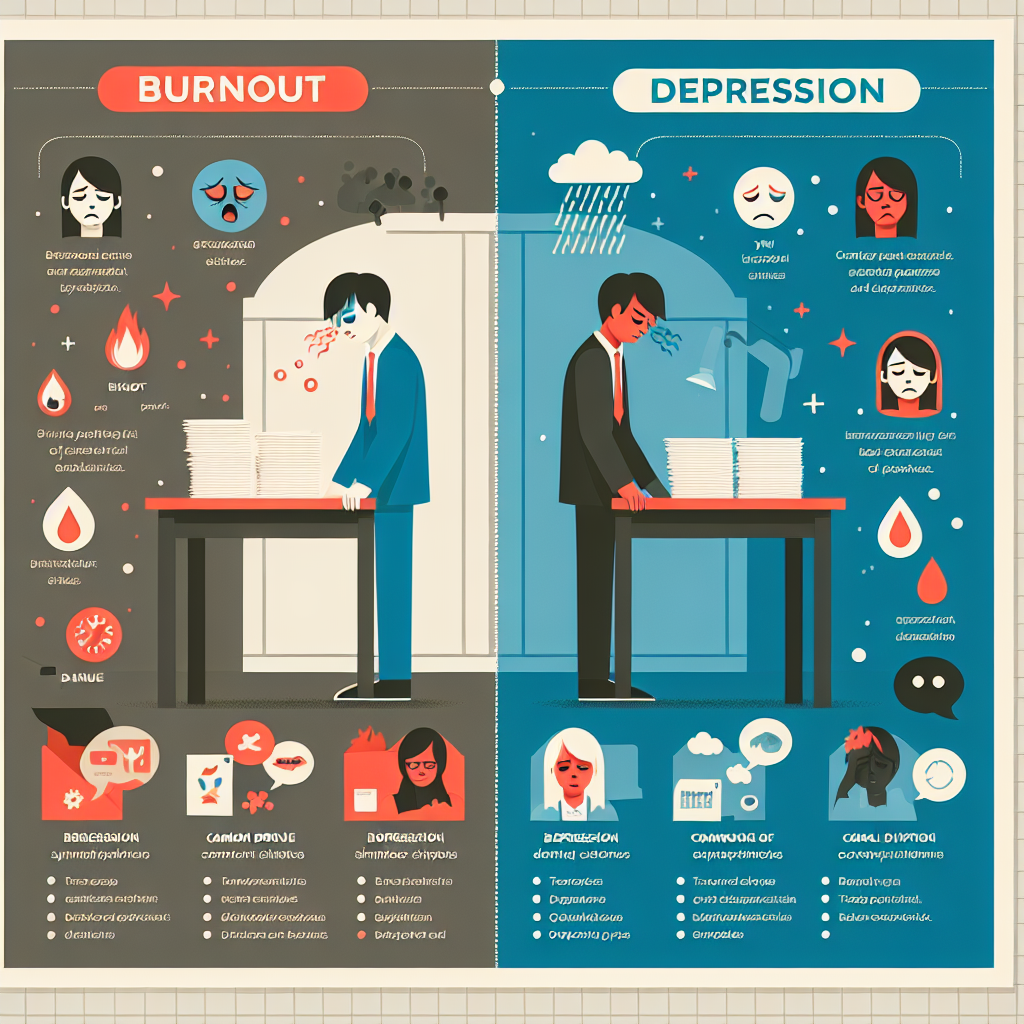How to Tell the Difference Between Burnout and Depression
Understanding Burnout vs. Depression
Introduction
In today’s fast-paced world, distinguishing between burnout and depression is crucial for mental well-being. While they share some symptoms, they are distinct conditions requiring different approaches for management and recovery.
Key Differences
Recognizing the differences between burnout and depression can help in seeking appropriate help and treatment.
- Origin: Burnout is primarily work-related, while depression can stem from various life aspects.
- Emotional State: Burnout often leads to feelings of exhaustion and detachment, whereas depression involves pervasive sadness and hopelessness.
- Physical Symptoms: Both can cause fatigue, but depression may also include changes in appetite and sleep patterns.
- Duration: Burnout symptoms may improve with rest and changes in work environment, while depression often requires more comprehensive treatment.
Identifying Burnout
Burnout is characterized by:
- Chronic workplace stress
- Emotional exhaustion
- Reduced performance
- Cynicism towards work
Recognizing Depression
Depression symptoms include:
- Persistent sadness or low mood
- Loss of interest in activities
- Feelings of worthlessness or guilt
- Difficulty concentrating
Approaches to Management
Addressing these conditions requires tailored strategies:
- Burnout: Implementing work-life balance, setting boundaries, and seeking support from colleagues or supervisors.
- Depression: Professional therapy, medication, and lifestyle changes such as exercise and healthy eating.
Conclusion
Understanding the nuances between burnout and depression is essential for effective intervention. While burnout is often linked to work stress, depression encompasses a broader range of emotional and physical symptoms. Recognizing these differences can guide individuals towards appropriate support and recovery strategies.














